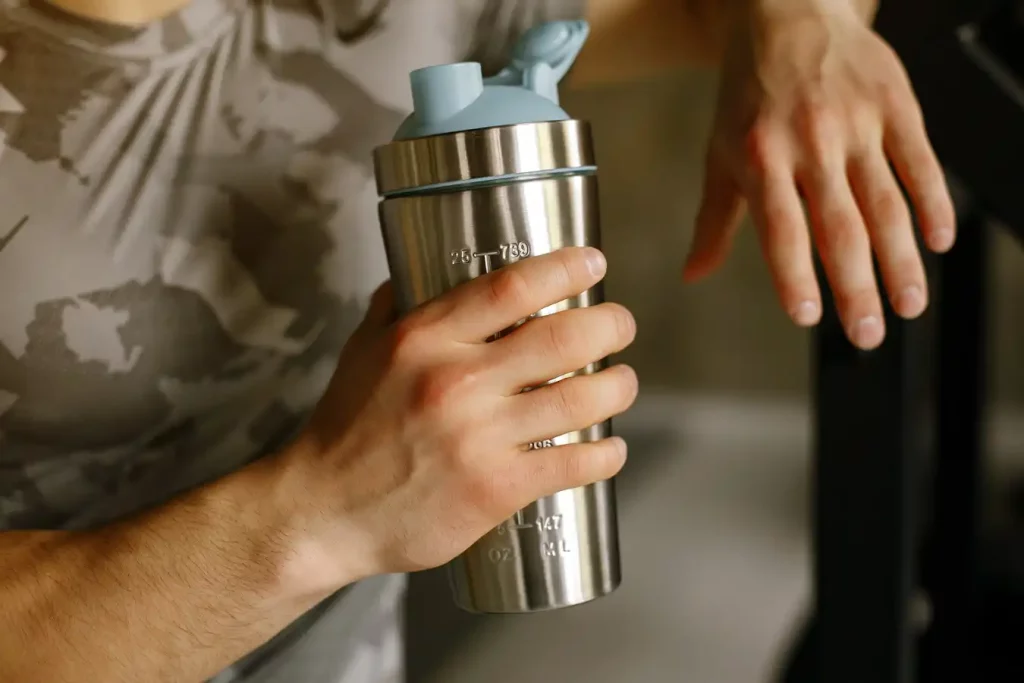Are you wondering “what type of water bottle is safest” for your adventures and daily routines?
As your fellow outdoor enthusiast, and I have pondered over the same question too!
Today, we're going to delve into the details of which bottles are best for you and why.
I assure you, it's not just a dull list but a colorful journey into the world of health-conscious hydration.
After all, we are what we drink, aren't we?
So, buckle up, dear reader, as we dive deep into the realm of safe and sustainable hydration, setting you up for healthier choices.
Why Bottle Safety Matters
Ever heard of the phrase “the devil is in the details”? Well, in our case, the devil might be lurking in the innocuous-looking water bottle on your desk. Bottle safety isn't just about whether the bottle leaks or not. No siree! It's about the type of material used in its manufacture, how it affects your health, and the impact it has on the environment.
Potential Risks of Unsafe Water Bottles
Here's a fact to sip on – some water bottles contain chemicals like BPA (Bisphenol A) which can leach into your drink, especially when exposed to heat. Remember that summer day workout we talked about? Yes, that could cause BPA leaching. Over time, exposure to these chemicals could lead to health complications like hormone disruption and even increased risk of certain cancers.
Now let's look at the bigger picture. Beyond your personal health, there are environmental concerns. Single-use plastic bottles, for instance, contribute significantly to global plastic pollution. Picture this: If you were to line up all the plastic bottles discarded in a year, you could reach the moon and back… 10 times! Yikes!
You might ask, “I recycle my bottles. Isn't that good enough?” While recycling is commendable, it's not a panacea. Only a fraction of plastic bottles end up being recycled, while the rest ends up in landfills or, worse, our oceans.
So, you see, bottle safety is a multi-faceted issue. It's about choosing a bottle that's safe for you, and equally important, safe for our planet. It's clear we need to quench our thirst for knowledge about water bottles before we quench our actual thirst.
Understanding Different Types of Water Bottles
When it comes to quenching your thirst, the variety of water bottles available can make it a daunting task to pick the safest option. From plastics to stainless steel, glass, and aluminum, each has its own pros and cons. Let's explore these in detail, shall we?
Plastic Water Bottles
When it comes to convenience, plastic water bottles often come to mind. They're lightweight, durable, and let's face it, pretty ubiquitous. Plastic bottles come in a wide range of designs, and the types of plastic used can vary too, with terms like ‘BPA-free' and ‘PET' thrown around.
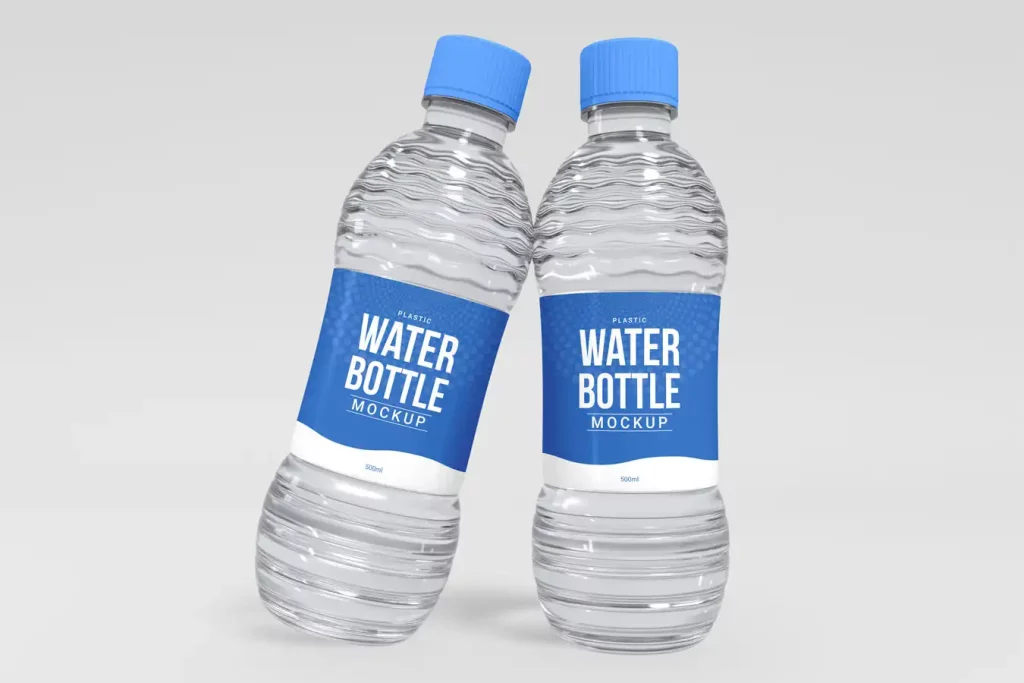
However, the word ‘plastic' can leave a bitter taste when it comes to health and environment. Some plastic bottles contain chemicals like BPA, phthalates, and PVC that can leach into the water. While many manufacturers now offer ‘BPA-free' bottles, concerns about other potential harmful chemicals persist.
Environmentally, plastic bottles are a significant source of pollution. Though recyclable, many end up in landfills or our oceans.
Learn more: How Many Inches is a Water Bottle
Stainless Steel Water Bottles
Stainless steel water bottles are a sturdy and sleek alternative to plastic. They are typically free of chemicals, do not leach, and can keep your water cool for longer. Plus, they are recyclable and more environmentally friendly than plastic bottles.
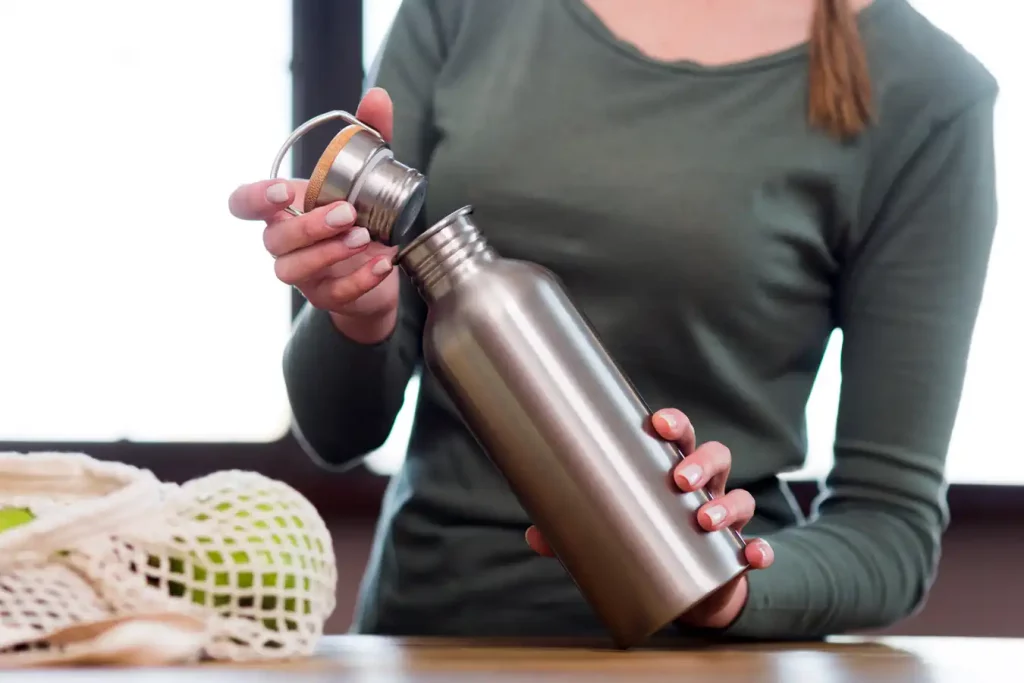
On the downside, they can be heavier to carry around and more expensive. Also, some people might notice a slight metallic taste when drinking from them.
Glass Water Bottles
Ever thought about going old school with a glass water bottle? Glass is naturally free from harmful chemicals and won't impart any flavors into your drink, providing a clean and fresh taste each time.
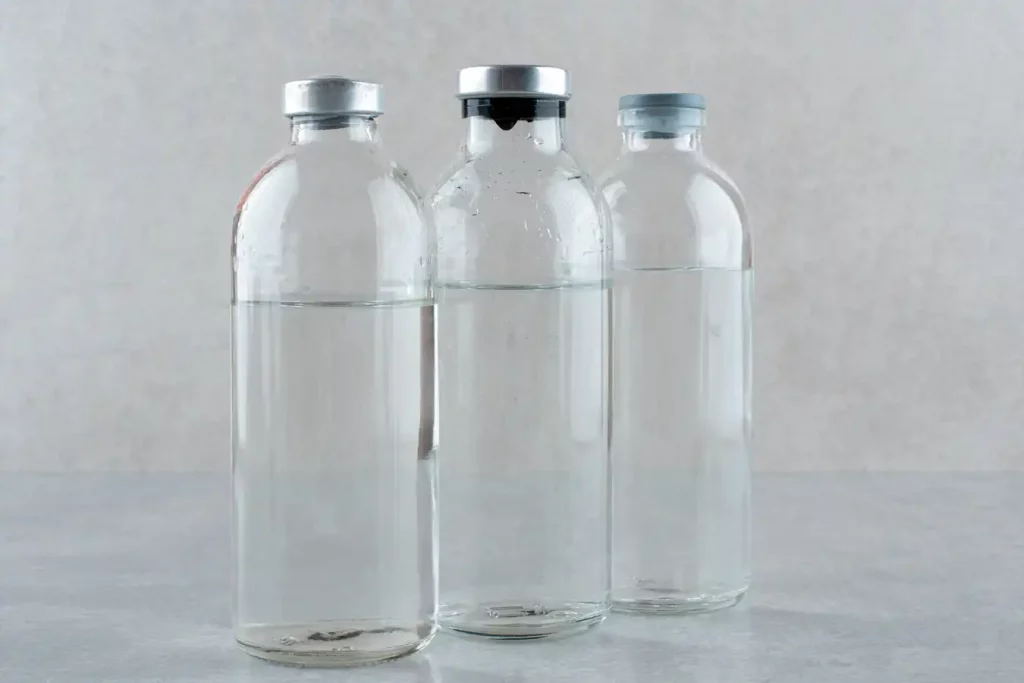
However, glass bottles can be fragile and heavier than other alternatives. And while they are fully recyclable, the energy required to do so is higher compared to other materials.
Aluminum Water Bottles
Aluminum water bottles, often lightweight and colorful, can be an attractive choice for those on the move. However, they require a lining inside the bottle to prevent the aluminum from leaching into the water. This lining could potentially contain chemicals like BPA.
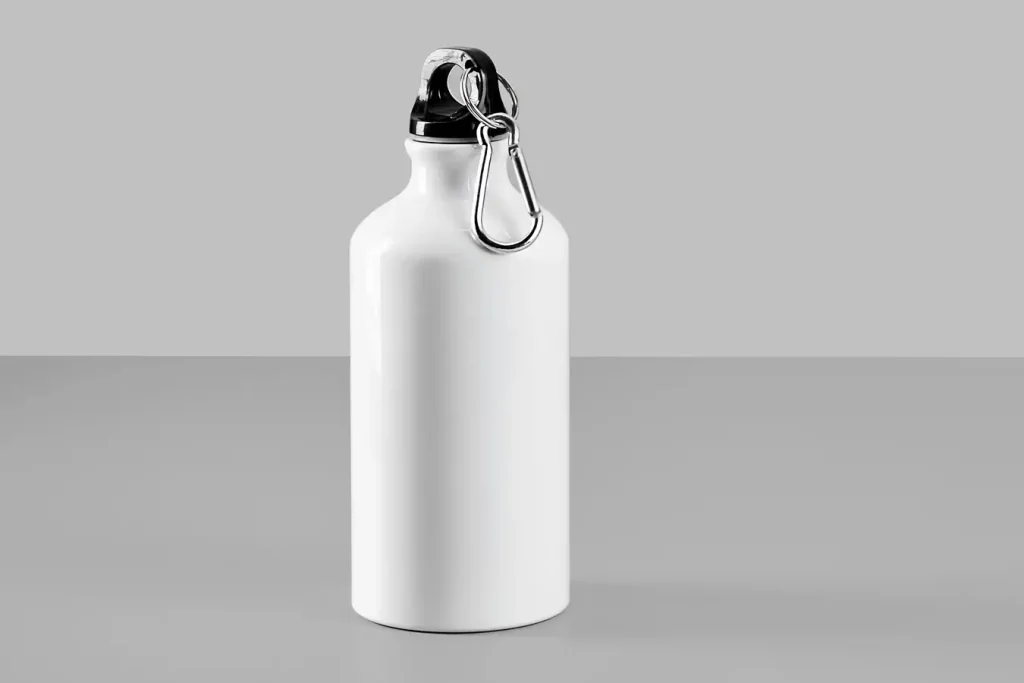
On the plus side, aluminum is recyclable and therefore more environmentally friendly than plastic. But just like with stainless steel and glass, these can be more expensive compared to plastic bottles.
Each type of water bottle carries its own set of advantages and potential concerns. Your safest bet would be to choose based on your needs and the least potential for harm both to your health and the environment.
More hydration guide on: How Much Does a 40 Pack of Water Weigh
Health and Environmental Impacts of Different Water Bottles
The type of water bottle you choose not only affects your personal health but also has a broader impact on our environment. Let's take a closer look at some of these concerns.
Health-wise, each material has its caveats. For instance, plastic bottles can potentially leach harmful chemicals like BPA, particularly under heat. Glass, while generally safer, may pose a risk if it contains leaded glass – a rare occurrence these days, but worth mentioning. Stainless steel and aluminum are generally safe, but can impart a metallic taste, and in the case of aluminum, require a lining to prevent leaching.
From an environmental standpoint, the manufacturing, usage, and disposal of water bottles of all types can contribute to pollution. Plastic bottles, while lightweight and energy-efficient to produce, often end up in landfills and oceans, leading to significant environmental damage. Although stainless steel, glass, and aluminum are recyclable, the energy needed for their production and recycling is high.
Read more: How Much Does a Pack of Water Weigh
Analyzing Safety of Different Bottle Materials
Safety is a primary concern when choosing a water bottle. Let's break down the safety profile of each material in more detail.
Safety of Plastic Water Bottles
While the convenience of plastic is undeniable, the safety of these bottles can depend on the type of plastic used. Many plastic bottles contain BPA, a chemical linked to health concerns like hormonal disruption and increased heart disease risk.
Fortunately, numerous manufacturers now produce BPA-free bottles, although some research suggests that the alternatives used might not be entirely risk-free either. When using plastic, avoid exposing the bottle to heat, like leaving it in a car on a hot day, as this can increase leaching.
Are Stainless Steel Water Bottles Safe?
Stainless steel is generally considered a safe choice. These bottles are typically free of harmful chemicals and won't leach substances into your water. Plus, they're durable and long-lasting. However, remember to clean them regularly, as bacteria can build up over time. Also, choose high-quality, food-grade stainless steel to avoid potential contaminants.
Glass Water Bottles and Safety
Glass bottles are generally safe and chemical-free. They won't leach anything into your water, ensuring a fresh and clean taste. However, as we mentioned earlier, be cautious of leaded glass. Although rare, it's still good to check with the manufacturer. Also, consider a protective silicone sleeve for your glass bottle to prevent breakage.
Aluminum Water Bottles: Safe or Not?
Aluminum bottles are light and robust, but they need a lining to prevent the metal from leaching into your water. Unfortunately, some linings might contain chemicals like BPA. So, it's crucial to check what kind of lining is used in your bottle. Also, acidic drinks can degrade the lining over time, so consider this when deciding what to fill your bottle with.
Choosing a water bottle isn't just about safety but also about maintaining healthy habits. The safest water bottle is the one you'll use regularly, clean diligently, and replace when it starts showing signs of wear and tear. After all, hydration is the key!
Learn more: How Big is a Water Bottle in Inches:
What to Look for in a Safe Water Bottle
Now that we've unpacked the nitty-gritty of different bottle materials and their safety profiles, how do you determine the safest option for you? A few critical factors can guide you in your quest for a safe and practical water bottle.
Understanding Bottle Labels
The first line of defense is understanding the labels on water bottles. Look for bottles marked BPA-free, especially if they're plastic. For stainless steel, make sure it's food-grade, and for aluminum bottles, check what type of lining is used.
There are also safety ratings and certifications that guarantee a certain level of safety. For instance, the NSF International (an independent public health and safety organization) provides certifications for food and water-related products, indicating they meet standard safety requirements.
Safe Drinking Water Standards
Various safety standards and regulations apply to drinking water and, by extension, water bottles. In the US, the Environmental Protection Agency (EPA) sets legal limits on over 90 contaminants in drinking water. However, these standards primarily apply to public water systems.
For water bottles, guidelines are more focused on the materials used and their potential to leach harmful substances. Always choose products from reputable manufacturers who comply with these safety standards.
Also learn: How Tall is a Water Bottle in Inches
FAQs About What Type of Water Bottle is Safest
What are the safest materials for water bottles?
What is the safest plastic bottle to drink from?
Are stainless steel water bottles safer than plastic?
What is the healthiest water bottle brand?
Conclusion: The Safest Type of Water Bottle
After delving into the wide world of water bottles, we can finally address the question: What's the safest type of water bottle? Stainless steel water bottles are considered the safest due to their non-toxic, BPA-free nature, and their ability to keep liquids fresh without leaching any harmful chemicals. Glass water bottles are also safest, as we discussed, but not for everyone, as they can break at any time.
Each material has its pros and cons, but safety-wise, stainless steel and glass water bottles seem to have the upper hand. They're generally free from harmful chemicals and won't leach substances into your water. Plus, they are durable and can last a long time with proper care.
However, the safest water bottle for you is ultimately one that suits your lifestyle, habits, and preferences. The bottle you'll use, refill, and carry with you every day is the best bottle – encouraging regular hydration and reducing the need for single-use plastic bottles. But remember, regardless of your choice, regular cleaning is essential for maintaining a safe and bacteria-free water bottle. Stay hydrated, and stay safe!
Read next: How Many Bottles of Water is 100 oz

